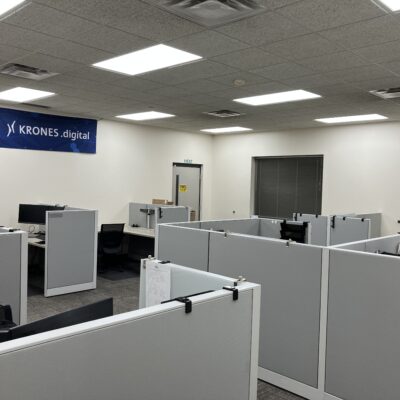
The personal workspace is evolving. Driven by the post-Covid boom and fueled by technology that spun out of the pandemic, employers are becoming increasingly creative and flexible when developing workplace solutions for existing and new employees. In a July 2023 article, Bloomberg Business reports that companies with flexible work policies are hiring at nearly double the rate of fully in-office operations. “Companies grow faster when they offer flexibility because people are more excited to join,” said Rob Sadow, co-founder, and chief executive officer of Scoop Technologies Inc. Prospective employees rank flexibility second only to compensation when it comes to workplace satisfaction, meaning that consistent headcount growth might be explained in part by talent flocking to flexible firms, he added.
Professional services firms are no exception to this trend and, in some ways, are even better suited for these types of arrangements than other industries. Process and Data Automation (PDA) has observed this for years and has used the post-Covid employment boom as a catalyst to implement serious change at the company’s Erie, PA, headquarters. “Our staff has the potential to spend significant time onsite at clients’ locations in support of our projects”, says Tim Andrews, engineering manager for PDA. “We took a hard look at how they spend the balance of their time in an effort to create the correct balance for them as professionals”, he continues. “The key to all of this effort is balance”, adds Jeremy Anderson, president of PDA. “We want to offer both work/life balance as well as task and loading balance”, continues Anderson.
PDA implemented a hybrid work environment. Employees have the option to function as in-office, completely remote, or hybrid staff. Some positions mandate either in-office or hybrid like Human Resources and other Managers but others have near complete flexibility to select the option that works best for them. “Remote work options are critically important to today’s prospective employees”, says Cheryll Snyder, HR manager at PDA. “Candidates include this as one of their first three questions when we interview”, she continues.
The company added workspace at their corporate headquarters at Penn State Behrend’s Knowledge Park to support those who have either in-office or hybrid positions. The company added twenty-two new individual workspaces in total. This also included multiple new collaborative workspaces as well as shared work or “touchdown” locations that can be reserved and utilized by those who are not at the site all the time. All the company’s conference areas were upgraded including the main conference area which can be configurable as meeting, training, or conference space. Team members working in-office or as part of their hybrid option have a healthy selection of individual space and collaborative areas where their teams can set up as a unit to tackle specific projects.
In addition to simple space additions, the company wanted to improve the work experience for all their staff. This included upgrading the ergonomics and flexibility of the workstations to ensure comfort and connectivity to anyone who used the space. They wanted systems accessibility while in-office to mirror the remote solutions as closely as possible. “Simple things like ease of connection help to provide a sense of individuality with purposeful consistency”, explains Anderson. People working in hybrid and fully remote situations recognized a significant technology upgrade as well.
Anderson notes that the response to these changes has been positive. “We’ve noticed a big change in our ability to attract talent as well as positive feedback from our existing teammates”. People enjoy the new space. Further, the overall changes have allowed the company to expand its aggregate footprint by adding staff in multiple midwestern states as well as the West Coast. People functioning in these new positions feel fully integrated and part of the overall ecosystem rather than like an exception within the organization.
“Some of the things we did were a reaction to new demands in the workplace”, continues Anderson. “We’re happy that we’ve done what we have so far, and we intend to continue upgrading office aesthetics in existing space. That will include staff’s involvement in personalizing the collaboration areas and similar options to make the space even more inviting and, hopefully, the teams even more productive”, Anderson concludes.
Posted In: News
© 2024 Process and Data Automation, All Rights Reserved.